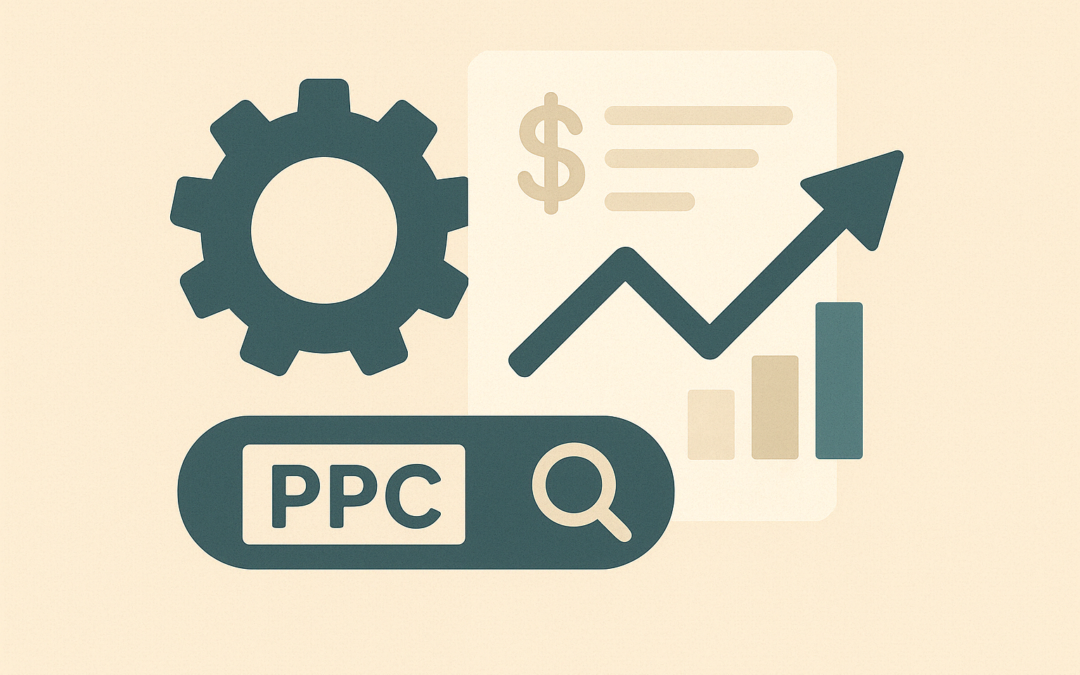PPC (Pay-Per-Click) advertising is a game-changer for manufacturing companies. It helps businesses target niche audiences, manage budgets efficiently, and track performance in real time. Here’s what you need to know:
- Why PPC Matters: Manufacturers often face long sales cycles and need to reach specific decision-makers. PPC allows you to focus on the right audience while paying only for results.
- Key Benefits:
- Target industry-specific roles like engineers or procurement teams.
- Pay only for clicks, ensuring cost-effective advertising.
- Use analytics to measure ROI and improve campaigns.
- How to Start:
- Set clear goals (e.g., lead generation or boosting conversions).
- Choose platforms like Google Ads for reach or LinkedIn Ads for B2B targeting.
- Optimise keywords and location targeting for precision.
Building Your Manufacturing PPC Campaign
Setting Clear Goals
For a successful manufacturing PPC campaign, you need to define clear, measurable goals. Focus on actions that matter – like generating leads, improving conversion rates, or maximising return on ad spend. These goals should directly align with your business priorities.
Choosing the Right PPC Platforms
Pick PPC platforms where your audience spends their time. Many manufacturers see success with Google Ads for its broad reach, while LinkedIn Ads often excel in targeting B2B audiences. Testing different platforms can help you figure out which one delivers the best results for your campaign.
Managing Your Budget
Start small with a test budget to evaluate performance, then increase spending based on results. This lets you fine-tune your campaigns without overspending. Experiment with different bidding strategies and budget distributions to find the most efficient way to attract high-quality leads.
Once your budget is under control, focus on refining audience targeting and keywords to get the most out of your campaign.
Audience and Keyword Planning
Manufacturing Audience Groups
For successful PPC campaigns in manufacturing, it’s crucial to break down your audience by industry, job roles, and location. For instance, if you’re in the industrial equipment sector, you’ll want to focus on operations managers, procurement officers, and plant supervisors.
Here are three key audience groups to consider:
- Industry decision-makers: C-level executives and department heads who control budgets.
- Technical buyers: Engineers and operations managers who influence purchasing decisions.
- Procurement teams: Purchasing managers responsible for vendor relationships.
This segmentation helps refine your keyword and location strategies, ensuring your campaigns reach the right people.
Manufacturing Keyword Selection
Once you’ve identified your audience, the next step is choosing the right keywords. Focus on terms that show a clear intent to buy, like specific product names, technical details, or industry jargon.
Here’s a quick guide to structuring your keywords:
| Keyword Type | Examples | Intent Level |
|---|---|---|
| Product-specific | “CNC machining services” | High |
| Technical specs | “ISO 9001 certified manufacturer” | Medium |
| Industry solutions | “custom metal fabrication” | High |
| Location-based | “industrial equipment supplier Chicago” | High |
This approach ensures you’re targeting users who are ready to make decisions.
Location Targeting
Your location targeting should align with your operational reach and key customer areas. Here are some strategies:
- Radius targeting: Define specific mile ranges around your facilities to focus on nearby prospects.
- State/region targeting: Concentrate on regions where your distribution network is strongest.
- Industrial zone focus: Target manufacturing hubs or industrial parks for more precise outreach.
Pair these tactics with strategies to re-engage previous visitors from your target areas. This builds familiarity and strengthens trust with potential clients in your core regions.
Improving Campaign Results
Writing Better Ads
When creating PPC ads for the manufacturing industry, precision is key. Write clear, attention-grabbing messages that appeal to decision-makers in this sector. Highlight your strengths in a way that speaks directly to their needs. Pair your ad copy with a landing page that’s designed to turn clicks into leads.
Landing Page Results
Your landing page should deliver exactly what your ad promises. Keep the content focused and relevant to meet the expectations of manufacturing buyers. A well-thought-out landing page, combined with effective ad copy, can significantly boost your conversion rates.
Bid Control Methods
Start with automated bidding to gather initial performance data. Then, adjust bids manually based on metrics like cost per lead, return on ad spend, and click-through rates. Pay attention to factors such as time of day, device type, and location to fine-tune your strategy for better results./banner/inline/?id=sbb-itb-43f4732
Tracking Campaign Success
Success Metrics
To evaluate your campaign’s effectiveness, focus on metrics that align with your business goals. Key metrics include CPC (cost per click), CTR (click-through rate), conversion rates, and ROAS (return on ad spend).
For manufacturing companies, the quality of leads often outweighs the quantity. Pay attention to these specific metrics:
- Cost per qualified lead: The average cost to acquire leads that align with your ideal customer profile.
- Lead-to-sale conversion rate: The percentage of PPC leads that turn into paying customers.
- Average order value: The typical purchase amount from customers generated through PPC.
- Customer lifetime value: The total revenue potential from PPC-acquired customers over time.
Once you’ve identified these metrics, use tools to transform raw data into actionable insights.
Measurement Tools
Combine tools like Google Analytics and your CRM to monitor the entire customer journey. Custom dashboards can help you track metrics in real time.
For manufacturing-specific goals, consider these tracking methods:
| Goal Type | Tracking Method | Key Metrics |
|---|---|---|
| RFQ Submissions | Form Completions | Conversion Rate, Cost per Lead |
| Technical Downloads | File Downloads | Engagement Rate, Document Value |
| Sales Inquiries | Phone Calls, Chat | Call Duration, Chat Quality Score |
| Product Research | Page Views | Time on Site, Pages per Session |
These tools and methods help you measure performance effectively and make data-driven decisions.
Regular Updates
Keep your campaigns aligned with their original objectives by reviewing and updating regularly:
- Weekly: Analyse key metrics and adjust bids as needed.
- Bi-weekly: Experiment with new ad variations.
- Monthly: Reevaluate your overall strategy and ROI.
Testing new ideas while keeping successful strategies intact ensures your PPC campaigns remain effective. Regular monitoring and updates help maintain consistent performance and measurable outcomes.
Solving Common PPC Problems
Reaching Small Markets
When targeting niche manufacturing markets, it’s all about choosing the right keywords. Instead of going for broad industry terms, zero in on specific, high-intent search phrases. This approach ensures your PPC campaigns attract the right audience – people who are more likely to become qualified leads.
Results Tracking
Once you’ve nailed down your targeting, the next step is tracking your results effectively. For industries with longer sales cycles, combining CRM data with campaign metrics can provide deeper insights. This helps you fine-tune your strategy and make smarter decisions about where to allocate your ad budget. It’s a critical step for keeping your PPC campaigns on track and delivering results.
Next Steps for Manufacturing PPC
Turn your manufacturing PPC campaigns into a powerful lead-generating tool by focusing on consistent optimisation and smart adjustments.
Set up a clear, data-focused monitoring system. Keep an eye on key metrics daily and make adjustments to improve performance. These small but regular tweaks can lead to better-targeted strategies over time.
For niche manufacturing markets, precise targeting is essential. Use these strategies to get the most out of your PPC budget:
- Fine-tune targeting by analysing search term reports to keep high-performing keywords and eliminate underperformers.
- Improve landing pages with content tailored to your industry and audience.
- Track ROI carefully by comparing ad spend with actual sales data to ensure your campaigns are profitable.
Building on the campaign setup and tracking methods already covered, focus on ongoing improvements.
This shift in perspective comes from seeing real results and understanding how each click drives business growth.

